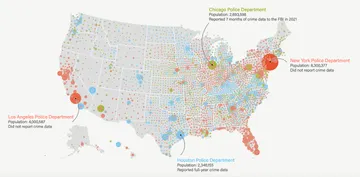This is The Marshall Project’s Closing Argument newsletter, a weekly deep dive into a key criminal justice issue. Want this delivered to your inbox? Subscribe to future newsletters here.
Starting tomorrow, the arrest process for most criminal defendants in Los Angeles will look very different.
An administrative change by the county court means that people accused of most misdemeanors and non-violent felonies who would have been taken to jail and charged cash bail to get out will, instead, generally be released with an order to appear in court at a later date.
Proponents — including the Los Angeles Times’ editorial board, which has been a steady advocate against money bail — note that the system treats people awaiting trial very differently based solely on how much money they have, rather than their likelihood of showing up for court, or the possible public safety risk they present. The cash bail system also disproportionately affects Black and Latino communities and has an outsized effect on women.
Opponents, including some law enforcement and crime victims’ groups, argue that removing cash bail contributes to crime — though some academic research shows otherwise.
California’s bail system has two separate stages. In most locations, people are automatically held in jail during the period between arrest and arraignment — the first court appearance, where a judge determines whether they will be released pretrial. California allows for a pre-arraignment bail to be set before prosecutors are even aware of the case, and before the person accused of a crime has spoken to a lawyer.
If a person can’t afford the bail set — most people can’t — the time in jail can be devastating to their career, housing, relationships, and most of all, their health and safety. At least 33 people have died in L.A. County jails this year, several of them amid complaints that cold temperatures were leading to fatal cases of hypothermia.
The bail changes come after some back and forth in the state over the issue. A 2018 bill to end cash bail was rejected by voters in a 2020 ballot initiative. Many of the same groups that rallied against the bill — local law enforcement and private bail bondsmen among them — have also sounded alarms about the L.A. County change, arguing that it will increase crime.
Expert testimony, presented to the court that initiated the change, notes that studies have tended to find the opposite. One witness told the court that the current system is surprisingly criminogenic — “that is, secured money bail causes more crime than would be the case were the money bail schedules no longer enforced.”
The move in L.A. resembles how bail has changed in Cuyahoga County, Ohio — home to Cleveland. As my colleagues Ilica Mahajan and Rachel Dissell reported earlier this month, an administrative change by county judges has dropped the number of people required to pay cash bail to get out of jail pretrial, especially for minor offenses.
Like in California, Ohio has also seen years of legal wrangling over bail. The state supreme court made changes in 2020 and 2021 aimed at reducing the number of people jailed pretrial. But voters last year passed a measure that requires judges to consider certain factors when setting bail, including public safety.
Nationwide, bail reform efforts — which started gaining steam in the mid-2010s — have frequently encountered profound political resistance. In New York, reform legislation faced significant backlash and lawmakers pared it back mere months after passage.
But in Illinois, months of legal challenges over bail reform finally gave way on Sept. 18, when the state became the first to fully abolish cash bail. Under the changes, people may only be detained pretrial if a judge determines they present a flight risk or public safety threat.
Like in L.A. County, the new Illinois law directs police to cite, rather than handcuff and arrest, people accused of minor misdemeanors. Those accused of more serious crimes can only be detained pretrial if prosecutors petition for it, and only after a detention hearing that must happen within 48 hours, according to Capitol News Illinois. Under the old system, bail hearings typically happened within 72 hours, lasted less than five minutes, and the accused were not provided a lawyer.
In Illinois detention hearings, judges must apply “the least restrictive conditions” necessary to ensure the defendant appears at hearings and “to protect an identifiable person or persons from imminent threat of physical harm.” Some reform advocates, who support the changes overall, worry that this language may lead to a boom in the use of electronic monitoring devices, like GPS-tracking ankle monitors. In a recent editorial, one researcher argued that monitoring has not been proven to improve public safety, and like jail, it “limits privacy, restricts liberty and disrupts family and financial security.”
In what may surprise some, all of Illinois’ major victims’ rights groups supported the bail reform law, according to WBEZ. Specifically, advocates for victims of domestic and sexual violence say the law offers new, important protections to victims. Unlike the old system, in which someone accused of this kind of violence would simply have to come up with enough money to get out of jail, advocates say the new system “should allow time for the victim to speak with prosecutors or meet with a probation officer to help assess the risk of releasing the person who has been charged.”
Correction: An earlier version of this story incorrectly referred to Cuyahoga County judges as city judges.
